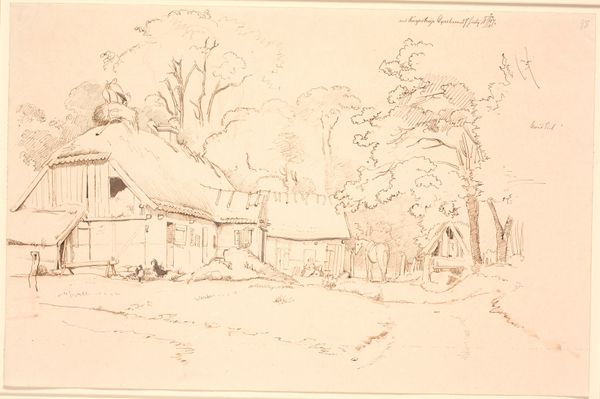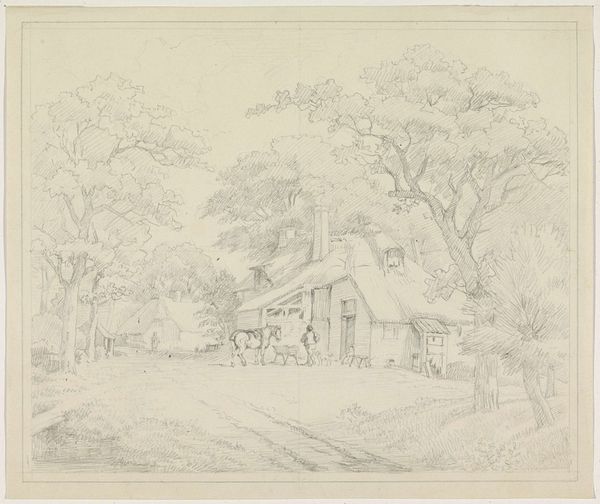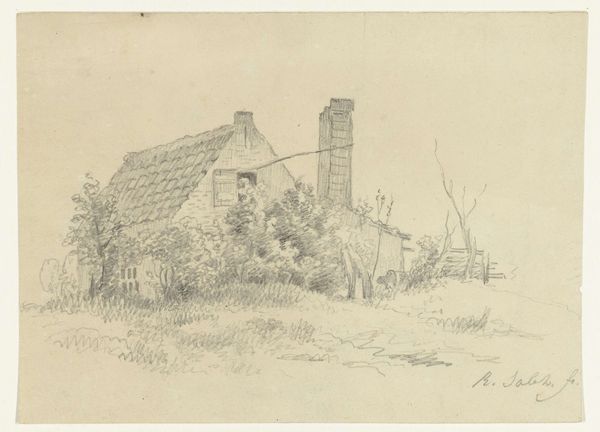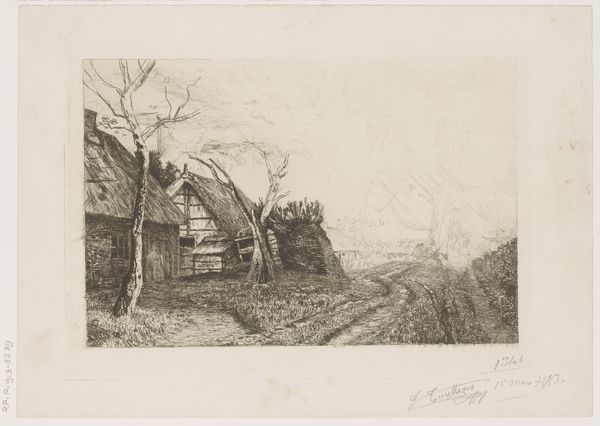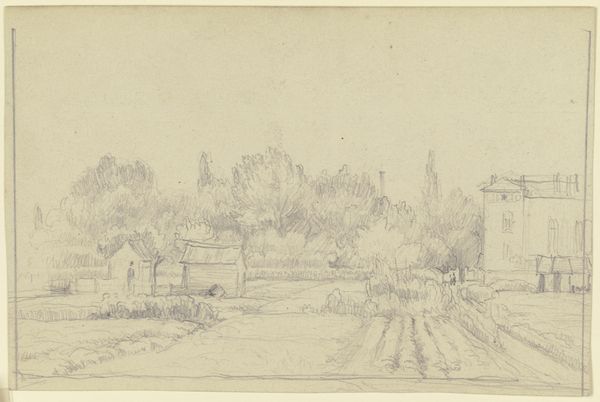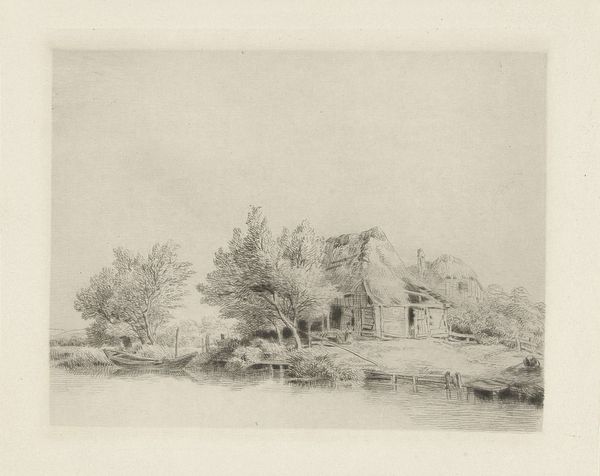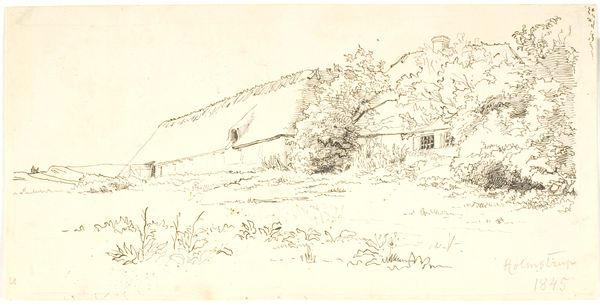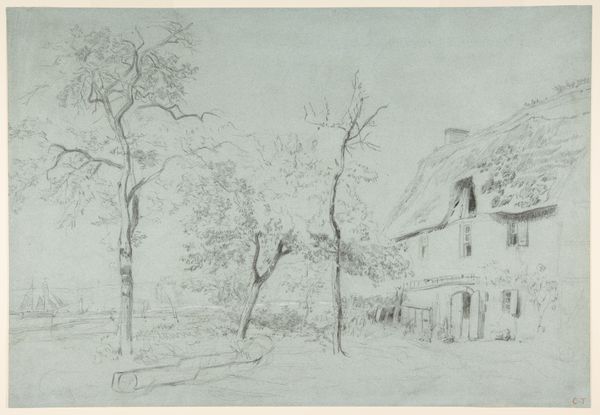
drawing, plein-air, paper, pencil
#
drawing
#
plein-air
#
pencil sketch
#
landscape
#
paper
#
pencil
#
pencil work
#
watercolor
#
realism
Dimensions: height 322 mm, width 490 mm
Copyright: Rijks Museum: Open Domain
Editor: We're looking at Piet Meiners’ "Boerenhuizen onder bomen in de omgeving van Velp," a pencil and watercolor drawing on paper, dating somewhere between 1867 and 1903. There's something so gentle and dreamlike about this little landscape. What stands out to you when you look at it? Curator: Ah, yes, a landscape whispered onto the page! For me, it's that evocative mistiness. Imagine standing there, the air thick with humidity, the scent of damp earth filling your lungs. Meiners isn't just showing us houses; he's giving us an experience. Notice how the trees aren't sharply defined? They almost dissolve into the atmosphere. What do you make of the perspective, or rather, the lack of it? Editor: It's interesting you mention that because everything feels quite compressed, almost like a stage set. The houses feel like they're right up against the trees. Is that deliberate, do you think? Curator: I do! I suspect he was interested less in precise topographical accuracy and more in capturing an emotional response to the scene. He seems to flatten the space so all of the picture elements are in the foreground as if it's a tapestry, wouldn’t you agree? Think about the tradition of plein-air drawing; artists were suddenly released into the landscape. Do you get a sense of spontaneity from the loose lines? Editor: Absolutely! It does have an immediacy. I hadn’t really considered how the shift to painting *outside* would impact perspective. Curator: Precisely. And it becomes this almost democratic act of recording, doesn’t it? He offers us an intimate moment of being there in the fields near Velp. Isn't that lovely? Editor: It really is. I think I appreciate its quiet intimacy much more now. Thanks! Curator: My pleasure! Every drawing contains a silent poem if you know how to listen.
Comments
No comments
Be the first to comment and join the conversation on the ultimate creative platform.


